Rulo şekillendirme kalıpları metal levhaları veya şeritleri istenen profillere şekillendirmek için rulo şekillendirme işleminde kullanılan araçlardır. Kalıp, her biri benzersiz bir şekle sahip olan ve bir boşluk oluşturmak için birbirine uyan iki veya daha fazla bölümden oluşur. Metal levha boşluktan geçerken, kademeli olarak istenen profile dönüştürülür.
Rulo şekillendirme kalıpları, bitmiş ürünün nihai şeklini ve kalitesini belirledikleri için rulo şekillendirme prosesi için çok önemlidir. Üreticilerin karmaşık ve girift şekilleri tutarlı bir doğruluk ve hassasiyetle üretmesini sağlarlar. Kalıbın tasarımı, rulo şekillendirme prosesinin verimliliğinin yanı sıra bitmiş ürünün dayanıklılığı ve ömrünün belirlenmesinde de çok önemli bir rol oynar.
Rulo şekillendirme kalıplarının tasarımı ve üretimi yüksek derecede beceri ve uzmanlık gerektirir. Doğru tasarlanmış ve üretilmiş bir kalıp, üretim süresini önemli ölçüde azaltabilir, üretim verimliliğini artırabilir ve nihai ürünün kalitesini iyileştirebilir. Öte yandan, kötü tasarlanmış veya üretilmiş bir kalıp düşük kaliteli ürünlere, üretim gecikmelerine ve artan maliyetlere neden olabilir.
Özetle, rulo şekillendirme kalıpları, metal levhaları veya şeritleri istenen profillere şekillendirmek için rulo şekillendirme işleminde kullanılan kritik araçlardır. Rulolu şekillendirme prosesinin kalitesini, verimliliğini ve maliyet etkinliğini belirlemede hayati bir rol oynarlar ve tasarım ve üretimleri yüksek düzeyde beceri ve uzmanlık gerektirir.
bir rulo şekillendirme kalıbı nasıl tasarlanır?
Bir rulo şekillendirme kalıbının tasarlanması, nihai ürünün istenen özellikleri karşıladığından emin olmak için çeşitli faktörlerin dikkatle değerlendirilmesini gerektirir. İşte tasarım sürecinde yer alan genel adımlar:
Bilgi toplayın: Malzeme türü ve kalınlığı, istenen profil şekli ve boyutları ve diğer gereksinimler veya kısıtlamalar dahil olmak üzere istenen ürün özellikleri hakkında bilgi toplayarak başlayın.
Merdaneli şekillendirme prosesi değişkenlerini belirleyin: Malzeme özellikleri, merdane takım tasarımı ve proses hızı, sıcaklığı ve basıncı gibi faktörler kalıp tasarımını etkileyecektir.
Bir ön tasarım oluşturun: Toplanan bilgileri kullanarak rulo şekillendirme kalıbı için bir ön tasarım oluşturun. Bu, kalıbın temel şeklini ve tasarımını gösteren eskizleri veya 3D modelleri içerebilir.
Tasarımı simüle edin: Ön tasarım tamamlandıktan sonra, bilgisayar destekli tasarım (CAD) yazılımını kullanarak rulo şekillendirme sürecini simüle edin ve tasarımı doğruluk ve verimlilik açısından test edin.
Tasarımı iyileştirin: Simülasyon sonuçlarına dayanarak, doğruluğu, verimliliği ve dayanıklılığı artırmak için tasarımı gerektiği şekilde düzeltin. Bu, malzeme türünün veya kalınlığının ayarlanmasını, takım tasarımının değiştirilmesini veya proses değişkenlerinin değiştirilmesini içerebilir.
Ayrıntılı çizimler oluşturun: Tasarım tamamlandıktan sonra, kalıp ve takımlar, kılavuzlar ve destekler dahil olmak üzere ilgili tüm bileşenlerin ayrıntılı çizimlerini oluşturun.
Kalıbı imal edin: Kalıbı gerekli spesifikasyonlara göre üretmek için bilgisayarlı sayısal kontrol (CNC) işleme, ısıl işlem ve son işlem süreçlerini kullanın.
Kalıbı test edin: Kalıp tamamlandığında, istenen özellikleri karşıladığından ve beklendiği gibi performans gösterdiğinden emin olmak için test edin. Bu, kalıbın gerçek üretim çalışmalarıyla test edilmesini veya performansını analiz etmek için simülasyon yazılımının kullanılmasını içerebilir.
Özetle, bir rulo şekillendirme kalıbının tasarlanması, istenen ürün özellikleri, rulo şekillendirme prosesi değişkenleri ve kalıbın tasarımı ve üretimi dahil olmak üzere çeşitli faktörlerin dikkatle değerlendirilmesini gerektirir. Tasarımcılar bu adımları izleyerek müşterilerinin ihtiyaçlarını karşılayan doğru, verimli ve dayanıklı haddeleme kalıpları oluşturabilir.
bir rulo şekillendirme kalıbı tasarlanırken göz önünde bulundurulması gereken faktörler
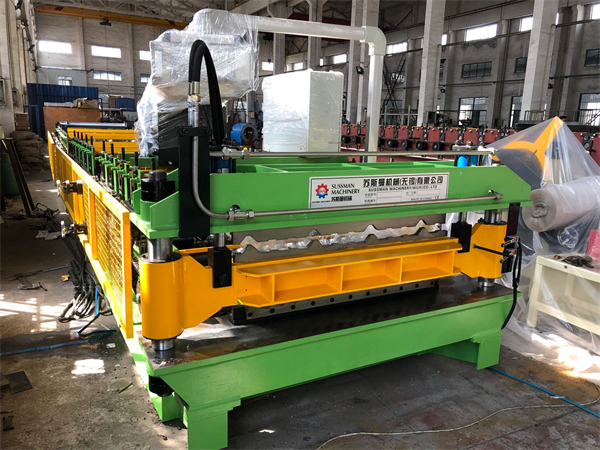
Bir rulo şekillendirme kalıbı tasarlarken, nihai ürünün istenen özellikleri karşıladığından emin olmak için göz önünde bulundurulması gereken birkaç temel faktör vardır. Bu faktörler şunları içerir:
Malzeme seçimi: Kalıbı oluşturmak için kullanılan malzeme güçlü, dayanıklı ve rulo şekillendirme işleminin gerilimlerine dayanabilir olmalıdır. Rulo şekillendirme kalıpları için kullanılan yaygın malzemeler arasında takım çelikleri bulunur, karbürlerve seramik.
Takım tasarımı: Takım tasarımı, metali istenen profile doğru bir şekilde şekillendirdiğinden emin olmak için dikkatlice düşünülmelidir. Bu, istenen şekli oluşturmak için birden fazla bölümün kullanılmasını, nervürler veya flanşlar gibi özelliklerin dahil edilmesini ve takımın düzgün bir şekilde hizalanmasını sağlamayı içerebilir.
Proses değişkenleri: Hız, sıcaklık ve basınç gibi faktörler kalıp tasarımını etkileyecektir. Rulolu şekillendirme prosesinin verimli, doğru ve tutarlı olmasını sağlamak için bu değişkenler dikkatle değerlendirilmelidir.
Malzeme kalınlığı ve türü: Kullanılan malzemenin kalınlığı ve türü kalıbın tasarımını etkileyecektir. Kalıp, hasar veya bozulmaya neden olmadan malzemeyi şekillendirmek için gerekli basınç miktarını uygulayacak şekilde tasarlanmalıdır.
Yağlama: Yağlama kullanımı, kalıp ile şekillendirilen malzeme arasındaki metal-metal temasını önlemek, kalıp üzerindeki aşınma ve yıpranmayı azaltmak ve bitmiş ürünün kalitesini artırmak için gereklidir.
Bakım: Kalıbın tasarımı, iyi durumda kalmasını ve beklendiği gibi çalışmasını sağlamak için düzenli bakım ihtiyacını dikkate almalıdır. Bu, değiştirilebilir bileşenler, temizlik için kolay erişim ve aşınmaya dayanıklı kaplamalar gibi özelliklerin dahil edilmesini içerebilir.
Kalite kontrol: Tasarım süreci boyunca, nihai ürünün istenen özellikleri karşıladığından emin olmak için kalite kontrol önlemlerini dikkate almak önemlidir. Bu, kalıp tasarımını test etmek için simülasyon yazılımı kullanmayı, üretim malzemeleriyle deneme çalışmaları yapmayı ve boyutsal doğruluğu ve yüzey kalitesini kontrol etmek için denetim araçlarını kullanmayı içerebilir.
Özetle, bir merdaneli şekillendirme kalıbı tasarlamak malzeme seçimi, takım tasarımı, proses değişkenleri, malzeme kalınlığı ve türü, yağlama, bakım ve kalite kontrol dahil olmak üzere birçok temel faktörün dikkatle değerlendirilmesini gerektirir. Tasarımcılar bu faktörleri göz önünde bulundurarak müşterilerinin ihtiyaçlarını karşılayan doğru, verimli ve dayanıklı haddeleme kalıpları oluşturabilir.
bir rulo şekillendirme kalıbı nasıl oluşturulur?
-
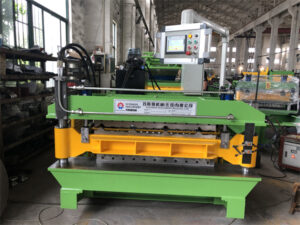 Çift katlı rulo şekillendirme makinesi
Çift katlı rulo şekillendirme makinesi -
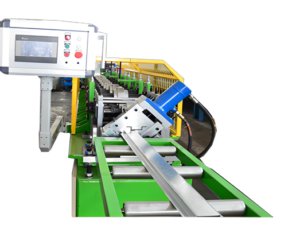 Omega çatı çıtası Üst şapka kanalı rulo şekillendirme makinesi
Omega çatı çıtası Üst şapka kanalı rulo şekillendirme makinesi -
 Yüksek hızlı PPGI oluklu sac rulo şekillendirme makinesi
Yüksek hızlı PPGI oluklu sac rulo şekillendirme makinesi -
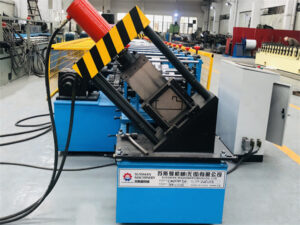 3mm Kalınlık Konteyner Ev Çapraz Üst Kiriş Rulo Şekillendirme Makinesi
3mm Kalınlık Konteyner Ev Çapraz Üst Kiriş Rulo Şekillendirme Makinesi -
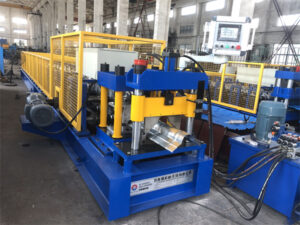 Aluzinc PPGI çatı mahya kapağı rulo şekillendirme makinesi
Aluzinc PPGI çatı mahya kapağı rulo şekillendirme makinesi -
 Dekoratif için çatı duvar paneli rulo şekillendirme makinesi
Dekoratif için çatı duvar paneli rulo şekillendirme makinesi
Rulo şekillendirme kalıbı oluşturmak, yüksek derecede beceri ve uzmanlık gerektiren karmaşık bir süreçtir. İşte bir rulo şekillendirme kalıbı oluşturmanın genel adımları:
İstenen ürün özelliklerini belirleyin: Malzeme türü ve kalınlığı, istenen profil şekli ve boyutları ve diğer gereksinimler veya kısıtlamalar dahil olmak üzere istenen ürün özellikleri hakkında bilgi toplayarak başlayın.
Bir ön tasarım oluşturun: Toplanan bilgileri kullanarak rulo şekillendirme kalıbı için bir ön tasarım oluşturun. Bu, kalıbın temel şeklini ve tasarımını gösteren eskizleri veya 3D modelleri içerebilir.
Tasarımı simüle edin: Ön tasarım tamamlandıktan sonra, bilgisayar destekli tasarım (CAD) yazılımını kullanarak rulo şekillendirme sürecini simüle edin ve tasarımı doğruluk ve verimlilik açısından test edin.
Tasarımı iyileştirin: Simülasyon sonuçlarına dayanarak, doğruluğu, verimliliği ve dayanıklılığı artırmak için tasarımı gerektiği şekilde düzeltin. Bu, malzeme türünün veya kalınlığının ayarlanmasını, takım tasarımının değiştirilmesini veya proses değişkenlerinin değiştirilmesini içerebilir.
Ayrıntılı çizimler oluşturun: Tasarım tamamlandıktan sonra, kalıp ve takımlar, kılavuzlar ve destekler dahil olmak üzere ilgili tüm bileşenlerin ayrıntılı çizimlerini oluşturun.
Kalıbı imal edin: Kalıbı gerekli spesifikasyonlara göre üretmek için bilgisayarlı sayısal kontrol (CNC) işleme, ısıl işlem ve son işlem süreçlerini kullanın.
Kalıbı test edin: Kalıp tamamlandığında, istenen özellikleri karşıladığından ve beklendiği gibi performans gösterdiğinden emin olmak için test edin. Bu, kalıbın gerçek üretim çalışmalarıyla test edilmesini veya performansını analiz etmek için simülasyon yazılımının kullanılmasını içerebilir.
Kalıbın bakımını ve onarımını yapın: Kalıbın iyi durumda kalmasını ve beklendiği gibi çalışmasını sağlamak için düzenli bakım ve onarım şarttır. Bu, bileşenlerin temizlenmesini, bilenmesini veya değiştirilmesini ve aşınmaya dayanıklı kaplamaların uygulanmasını içerebilir.
Özetle, bir rulo şekillendirme kalıbının oluşturulması, istenen ürün özelliklerinin belirlenmesi, kalıbın tasarlanması, tasarımın simüle edilmesi, tasarımın rafine edilmesi, ayrıntılı çizimlerin oluşturulması, kalıbın üretilmesi, kalıbın test edilmesi ve gerektiğinde kalıbın bakımı ve onarımı dahil olmak üzere bir dizi adımı içerir. Bu adımları takip ederek üreticiler, müşterilerinin ihtiyaçlarını karşılayan doğru, verimli ve dayanıklı rulo şekillendirme kalıpları oluşturabilirler.
bir rulo şekillendirme kalıbının oluşturulmasında yer alan çeşitli üretim süreçleri
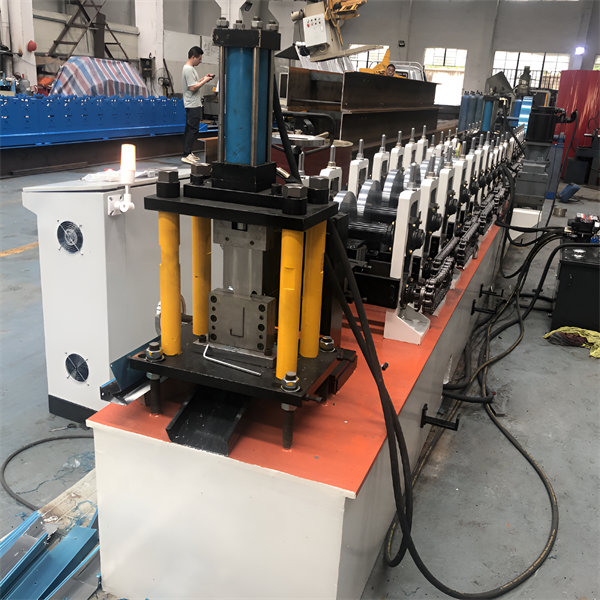
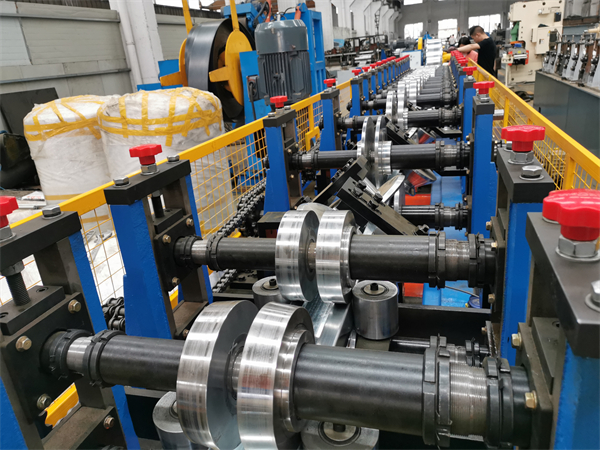
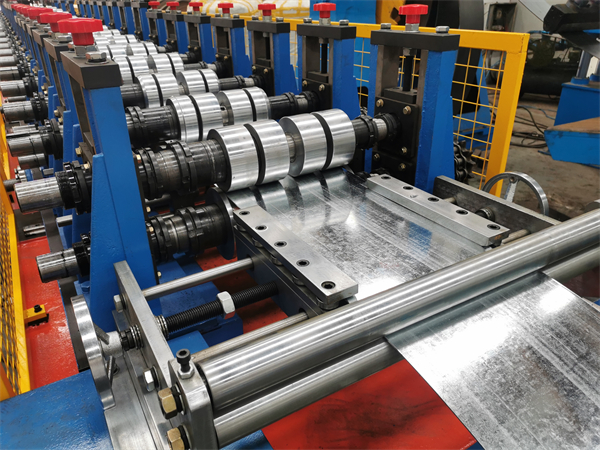
Bir rulo şekillendirme kalıbının oluşturulması, nihai ürünün istenen özellikleri karşılamasını sağlamak için birkaç farklı üretim sürecini içerir. İşte bir rulo şekillendirme kalıbının oluşturulmasında yer alan temel süreçler:
CAD/CAM tasarımı: Bilgisayar destekli tasarım (CAD) yazılımı, rulo şekillendirme kalıbının dijital bir modelini oluşturmak için kullanılır. Bilgisayar destekli üretim (CAM) yazılımı daha sonra CNC makinesi için takım yolları ve işleme talimatları oluşturmak için kullanılır.
CNC işleme: CAD/CAM tasarımı tamamlandıktan sonra, kalıp bir CNC freze makinesi kullanılarak üretilir. Makine, CAM yazılımı tarafından oluşturulan takım yollarını takip ederek boş bir çelik parçasından malzeme çıkarmak için bir kesme aleti kullanır. Bu işlem, nihai şekil elde edilene kadar kalıbın her bir bölümü için tekrarlanır.
Isıl işlem: Kalıp işlendikten sonra sertliğini ve dayanıklılığını artırmak için ısıl işleme tabi tutulmalıdır. Kalıp yüksek bir sıcaklığa kadar ısıtılır ve ardından yağ veya su gibi bir soğutma ortamında söndürülür. Bu işlem kalıbın sertleşmesine ve aşınma direncinin artmasına yardımcı olur.
Son İşlem: Kalıp ısıl işleme tabi tutulduktan sonra, çapakları veya pürüzlü kenarları gidermek ve yüzey kalitesini iyileştirmek için bir son işlemden geçebilir. Bu işlem taşlama, parlatma veya kalıbın koruyucu bir malzeme ile kaplanmasını içerebilir.
Montaj: Kalıbın tüm bileşenleri üretildikten ve tamamlandıktan sonra, nihai kalıba monte edilirler. Bu, çeşitli bölümleri birbirine sabitlemek için cıvata, vida veya diğer bağlantı elemanlarının kullanılmasını içerebilir.
Test etme: Kalıp monte edildikten sonra, istenen özellikleri karşıladığından emin olmak için test edilmelidir. Bu, kalıbın gerçek üretim malzemeleriyle test edilmesini veya performansını analiz etmek için simülasyon yazılımının kullanılmasını içerebilir.
Bakım: Kalıbın iyi durumda kalmasını ve beklendiği gibi çalışmasını sağlamak için düzenli bakım şarttır. Bu, temizlik, bileşenlerin keskinleştirilmesi veya değiştirilmesi ve aşınmaya dayanıklı kaplamaların uygulanmasını içerebilir.
Özetle, bir rulo şekillendirme kalıbı oluşturmak CAD/CAM tasarımı, CNC işleme, ısıl işlem, son işlem, montaj, test ve bakım dahil olmak üzere birkaç farklı üretim sürecini içerir. Üreticiler bu süreçlerin her birini dikkatli bir şekilde uygulayarak müşterilerinin ihtiyaçlarını karşılayan doğru, verimli ve dayanıklı rulo şekillendirme kalıpları oluşturabilir.
Sonuç olarak, rulo şekillendirme kalıbı tasarımı, malzeme özellikleri, takım tasarımı ve üretim gereksinimleri gibi çeşitli faktörlerin dikkatle değerlendirilmesini gerektiren kritik bir süreçtir. Doğru yaklaşım ve uzmanlıkla, kalıp tasarımı üreticilerin yüksek kaliteli ürünleri verimli ve uygun maliyetli bir şekilde üretmelerine yardımcı olabilir. Rulolu kalıp tasarımının ilkelerini anlayarak, üreticiler üretim süreçlerini optimize edebilir ve günümüz pazarında rekabetçi kalabilirler.
